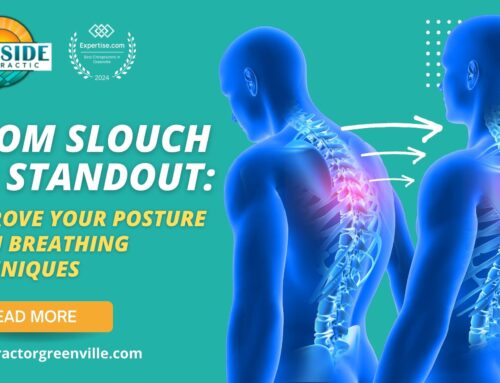Carpal Tunnel Syndrome Help at Home
 Wrist and hand pain, numbness, tingling, and lost grip strength are all characteristic of common Carpal Tunnel Syndrome. The symptoms can radiate up the arm and down into the fingers which makes tasks like keyboarding painful and difficult. Many of us know people who have had carpal tunnel surgery or other medical treatment, but is there anything which can be done to avoid surgery?
Wrist and hand pain, numbness, tingling, and lost grip strength are all characteristic of common Carpal Tunnel Syndrome. The symptoms can radiate up the arm and down into the fingers which makes tasks like keyboarding painful and difficult. Many of us know people who have had carpal tunnel surgery or other medical treatment, but is there anything which can be done to avoid surgery?
Carpal Tunnel Syndrome Exercises
If you know someone with carpal tunnel syndrome, these 5 exercises may be a big help. When exercising for the purpose of relieving carpal tunnel syndrome, it’s important to understand that frequency matters! It is really very hard to do these exercises too often, because the purpose of the exercises is to keep tendons within the wrist moving freely, improve circulation, remove the “pinch” of the median nerve and strengthen muscles. Of course, if any motion or position causes a sharp pain or worsening of symptoms, modify or STOP that exercise!
1. Wrist Circles: Place palms down with elbows bent at 90 degrees, and draw a circle with your middle finger. Repeat this five times, both clockwise and counterclockwise. Increase the size of the circle with each repetition.
2. Thumb Stretch: Place the palm of a hand on a wall with straight elbows and fingers pointing downward. Reach across and pull the thumb back and hold for five seconds, repeating three or four times.
3. The 5 finger Stretch: a.) Spread fingers of both hands as far apart as possible. Slowly begin to bend only the fingertips. Continue curling the fingers until they make a tight fist. Hold each position for five seconds and repeat three to five times.
4. Wrist Curls (4 positions: Palm up, Thumb up, Palm down, Pinky up): Using exercise tubing or light hand weights, sit and rest your forearm on your thigh; position your hand palm up and lift the weight toward the ceiling. Slowly lower the weight toward the floor. Repeat this motion three to five times in each of the four hand positions. Feel free to support the weight with your opposite hand.
5. Neck Stretches: A carpal tunnel syndrome help which can pay big dividends! Bend your head sideways to the right and reach over with the right hand and pull gently while reaching down towards the ground with the left. Move your head and neck into various positions feeling for a good stretch in different tight neck muscles. Repeat this exercise on the other side.
Diet and Nutrition
Carpal Tunnel Syndrome help can also be found with appropriate diet and nutrition: It’s much more important than it sounds, since you can reduce inflammation by doing very simple things! First, stop eating grains. There is lots of research implicating grains as a big cause of inflammation. Add 4000 I.U. of fish oil / day and 5000 I.U. of vitamin D3 per day (of course, talk to your doctor first). Avoid eating sugar and refined carbohydrates. These are another cause of swelling and eliminating them will boost your energy and help with weight loss. (Obesity is a risk factor for carpal tunnel syndrome).
Other Considerations
Sleep: Since we cannot control the position of our wrist when sleeping, wearing a night time splint can be an excellent carpal tunnel syndrome help. We can assist you with this.
Driving: It’s common for carpal tunnel syndrome symptoms to worsen while you hold the steering wheel. Position your hands at the 8 and 4 0’clock positions on the wheel to keep the wrists straight. Wearing your splints while driving can be a carpal tunnel syndrome help as well.
Chiropractic Treatment
Chiropractic Care: Perhaps the most profound carpal tunnel syndrome help is found here! There are often many areas between the neck (where the median nerve starts) and the wrist that need to be kept loose to minimize nerve compression and irritation. Chiropractic treatments are very effective for many people!
We realize you have a choice when you consider health care providers, and we sincerely appreciate your trust in choosing our office for your needs. If you, a friend, or family member need care for Carpal Tunnel Syndrome, we would be honored to have the opportunity to serve!
Carpal Tunnel Syndrome: Wrist and Hand Pain or Numbness
Carpal Tunnel Syndrome (CTS) is a very common problem affecting a large portion of society. Estimates are that up to 1 in 20 of the general population are affected, with occupations such as typists, assembly line workers, postal employees, servers/waitstaff, musicians and carpenters being those most often afflicted by this disorder. CTS produces a high level of cost to the health care system when time lost from work, treatment costs, and short and long term disability payments are factored in. Continued signs and symptoms of CTS can persist long after a surgical treatment, and the question that typically arises from my patients after this happens is simply “…why?” Let’s take a look at the reasons for failed treatment of CTS…
The classic non-surgical medical treatment for CTS includes non-steroidal anti-inflammatory medication (like ibuprofen), rest, and use use of night time wrist splints. This approach works with some cases, but for the majority it is unsuccessful and leads to the next medical management step: surgery.
The advanced chiropractic management model for treating CTS includes similar initial treatment approaches including non drug anti-inflammatory measures, rest, and night splints. So, what makes the chiropractic model different and highly effective?
The nerve affected in CTS is called the median nerve. It arises initially from the nerves in the neck, specifically those of the base of the neck and the joint at C6-C8 which becomes the brachial plexus (arm nerve bundle). These form into one nerve (the median nerve) which travels through small openings, first at the neck followed by the shoulder (called the thoracic outlet), and then into the arm through a muscle at the elbow (pronator tunnel), and finally through the carpal tunnel at the wrist to provide nerve supply to the hand. The median nerve can get “crushed” in more than one tunnel and treatment must address the whole nerve, not just at the carpal tunnel in the wrist. The chiropractic management of CTS helps many patients because the nerve along its entire course including the neck, shoulder, and elbow is treated, not just the wrist!
We realize that you have a choice in who you consider for your health care needs and we sincerely appreciate your trust in choosing our office. If you, a friend or family member require care for CTS, we would be honored to offer our services to help you experience maximized living without pain!
I hope you found this post about Carpal Tunnel Syndrome informative. If you would like to schedule a consultation please call our chiropractic office in Greenville SC. We are conveniently located on Wade Hampton Blvd just outside of downtown Greenville. We would love to discuss how we can help you with CTS or any other health concerns that can be addresses through chiropractic care.
Eastside Chiropractic PA (Chiropractor in Greenville SC)
3014 Wade Hampton Blvd., Taylors SC 29687
864-292-6777





